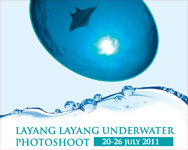RED has announced the release of a potentially revolutionary way to increase the tonal range available. A new High Dynamic Range function, called “HDRx”, gives the camera operator the ability to “dial-in” expanded dynamic range capability at the time of image capture. This should give up to six more stops of latitude in addition to the 12 or so stops native to their sensors. This expanded range will now be standard on Red cameras and available to all Epic and Scarlet customers.
HD Magazine asks whether this could “be the end of blown out highlights?” Traditional film gave 15 or 16 stops, and with this new feature, RED cameras will have up to 18 stops of latitude, with “on-the-fly” adjustment. In another development, RED has also announced its “Magic Motion” post processing feature for its HDRx footage that allows the post/editor to add custom motion blur characteristics and apply them to each HDRx clip independently.
The HDR approach basically takes two exposures and combines them into one image. The brighter exposure lifts up the dark areas of the image while the darker exposure protects the bright areas from overexposing and turning pure white. For motion, this presents a fundamental problem as the different exposure times of the same moving subject will produce two different blurs, and they will not match each other precisely. This is because the shutter is open longer during the brighter frame and shorter during the darker frame. To deal with this, RED has found a way to interpret the motion blur characteristics from each of the two frames, and then blend them together with user-control.
Continue Reading









